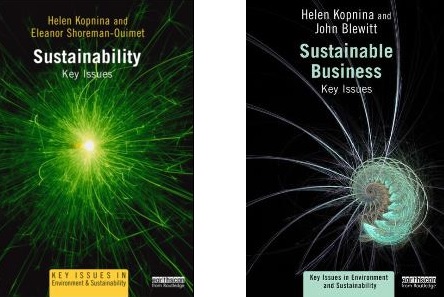Paradoxes of sustainability
Sustainability bottlenecks, paradoxes or myths are addressed by many researchers in the broad field of sustainability. Yet, few authors come up with a clear framework for sustainable solutions. Here, some valuable directions from my teaching practice.
The many faces of sustainability
The concept of sustainability – the way most of us use it today – has emerged in the 1960s in response to concern about environmental degradation and social equity. In this half-century many different uses of the term sustainability as well as its derivatives have emerged: social sustainability, environmental sustainability, sustainable development, sustainable living, and sustainable future.
Environmental sustainability typically refers to diverse issues associated with climate change, biodiversity loss, or pollution. Sustainability is also linked to ethical concerns, involving a commitment to justice between generations in matters of distribution of natural resources, working conditions and human rights.
Yet, sustainability is not always perceived in a progressive context. Sometimes, overwhelmed by the challenges of unsustainability, some of us have despaired at the possibility of addressing unsustainability – either because we feel individually powerless to change anything, or because of the lack of interest. Others feel that sustainability challenges, such as overpopulation and overconsumption, are grossly exaggerated. And there is a group – to which particularly large corporations in their public relations belong – have expressed their optimism about their own contribution to sustainability, assuming that no further effort is necessary.
A framework for sustainable solutions
This doubt, despair, and optimism have salient implications on how we react to sustainability challenges. There is a pronounced need to provide concrete steps on how to travel down the sustainable path together with examples or applications. Few authors come up with the clear framework for sustainable solutions, as I have discussed in the two recent volumes on the key issues in Sustainability and Sustainable Business.

Sustainability: Key Issues (© 2016 – Routledge) and Sustainable Business: Key Issues (© 2015 – Routledge)
In these volumes, the contributing authors have argued that in order to address sustainability challenges, we need to understand the bottlenecks of population pressures as well as production and consumption challenges. A number of questions that embody these bottlenecks, paradoxes or myths of unsustainability, have been addressed, such as: What do pension funds have to do with sustainable business? Why is eco-efficiency not good enough to achieve sustainable production? How do better health and more equitable distribution of resources contribute to unsustainability?
In my teaching practice, students explore these and many other questions with each other on the basis of a number of critical publications on the subject of sustainability by William Rees, Herman Daly, Haydn Washington and Eileen Crist. These interdisciplinary publications help students to develop their critical thinking and to address (among many others) the three questions above.
Green pensions better than recycling paper
In regard to pension funds and sustainability, the connection could be made through the concept of green investment, which fits within a larger literature on direct and indirect environmental impacts. Social psychologist Paul Stern has distinguished between two types of environmental impacts: direct and indirect. Some behavior directly causes environmental change, with examples of direct dumping of nuclear waste or cutting down the rainforest. Other behavior can be indirectly significant, such as investments done in the logging industry through pension funds, or through savings. Thus, the ability to move pension funds to a green-investment bank can have a greater environmental impact than merely recycling one’s own newspaper.
Directly, addressing population may simultaneously help to tackle poverty as the global pressure on resources will be lessened. Such investment would also indirectly helps to protect endangered species through reducing human pressure on last remaining wild habitats.
Cradle to Cradle: Eliminating the damage
In regard to eco-efficiency, the Cradle to Cradle and Circular Economy concepts are employed. Based on the notion of industrial metabolisms, William McDonough and Michael Braungart developed the notion of the Cradle to Cradle (C2C). McDonough and Braungart ask us to contemplate not just minimizing the damage the way eco-efficiency does, but eliminating it all together. In this view, eco-efficiency simply serves to ‘slow the process of destruction’ and ‘makes a bad design last longer’.
Instead, the C2C framework propagates a simple dictum: waste equals food. A cherry tree metaphor exemplifies the example of C2C principle, with its ‘waste’ (blossoms and berries) either directly consumed by birds, or decomposing into food for soil, with nutrients flowing indefinitely in cycles of birth, decay and rebirth. Understanding these regenerative systems allows engineers and designers to recognize that all materials can be designed as nutrients that flow through natural (biological) or designed (technological) metabolisms. For example, materials designed as biological nutrients, such as packaging made from natural fibers, can biodegrade safely. Ideally, every product can be designed from the outset so that after its lifetime is over, the product will then continue to ‘live’ by becoming a nutrient, creating infinite material flows.
Ethical and practical contradictions
In regard to the last, and perhaps the most ethically loaded, question about how better health and more equitable distribution of resources can contribute to unsustainability challenges, we turn to a more critical literature on the long-term effects of current sustainability policies. While focused on the symptoms of unsustainable practices – including resource depletion and poverty – conventional frameworks tend to ignore the ethical and practical contradictions.
One of these contradictions involves the desire to improve human health (resulting in population growth) and material well-being (resulting in increase in consumption); and to secure the carrying capacity of this planet (which is conditional on halting population and consumption), reflecting the ‘have your cake and eat it’ oxymoronic objective.

© H. Kopnina
Focus on mechanisms
While many policy makers and members of civil society are aware of the symptoms of unsustainability, few of them have realized the core challenges of unsustainability. Few sustainability programs have addressed the root causes of poverty, part of which is population growth itself, and the global spread of unsustainable practices. While many have accepted poverty elevation and economic aid to developing countries as normative, few invest in family planning or attempt to halt production of cradle to grave products.
In order to achieve sustainability aims, public, corporate and government stakeholders need to learn to better understand not only challenges, but also the mechanisms underlying unsustainable practices. Once these challenges and mechanisms are understood, a more positivistic turn toward solutions becomes possible.




0 Comments
Add a comment